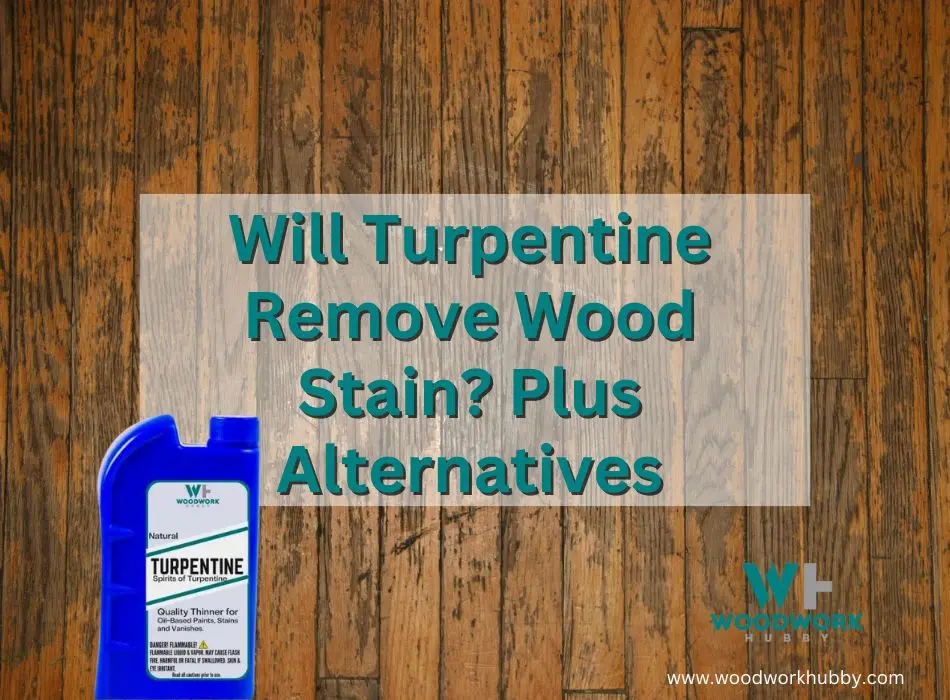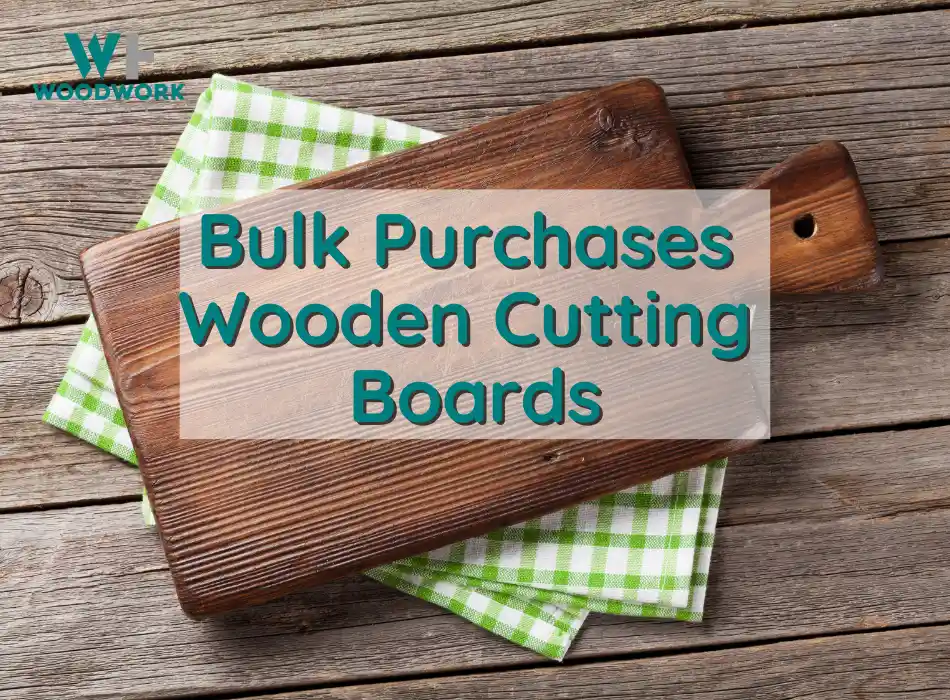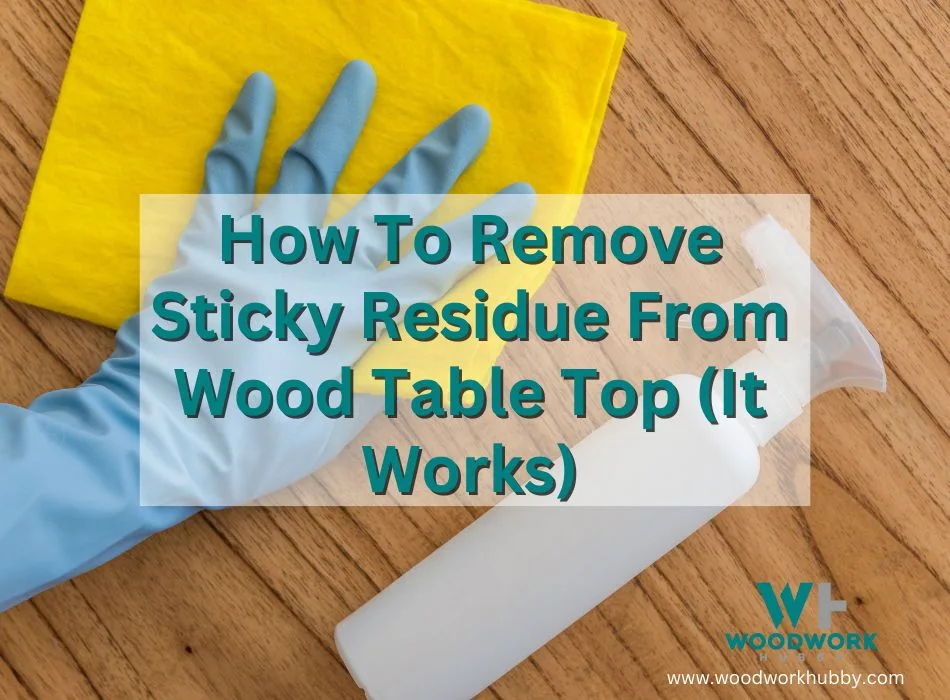When it comes to removing wood stains, a few different methods can be used. One of the most popular methods is using turpentine. However, it’s important to know the risks and alternatives before using this harsh solvent. Will turpentine remove wood stains?
Turpentine removes wood stains by dissolving the pigments and dyes that make up the stain. This can be an effective method for removing certain types of stains; when applied it softens the stain, and you can easily clean the stain off with a soft cloth.
In this blog post, I will discuss whether or not turpentine will remove wood stains, as well as some safer alternatives that can be used instead.
Can Turpentine Be Used to Remove Stains?
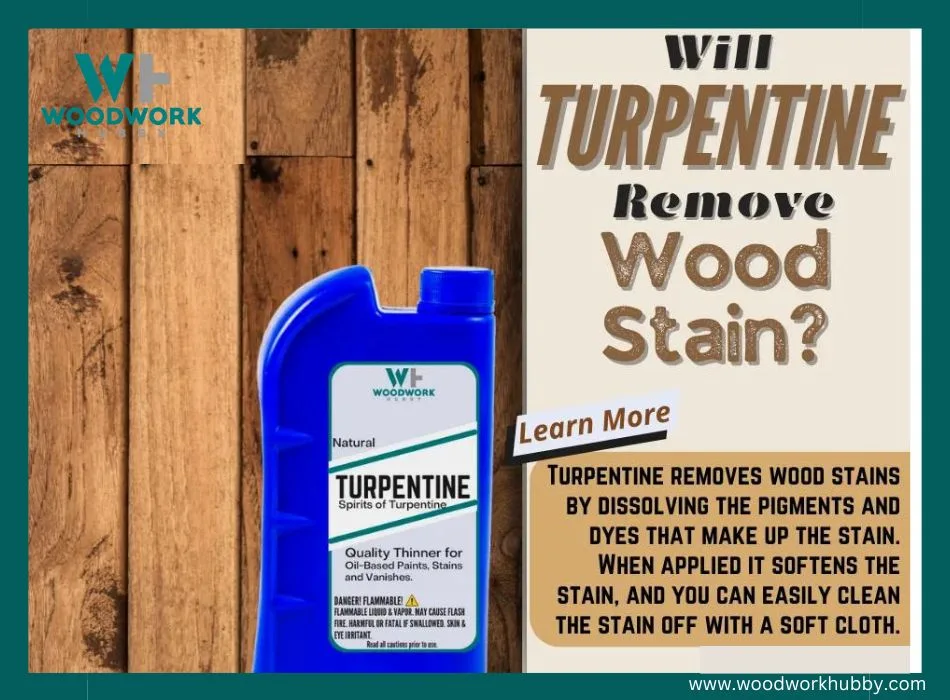
Turpentine can be used to remove stains, but it is a harsh solvent that can damage your wood. Turpentine is a petroleum-based product that is derived from crude oil. It is a volatile organic compound (VOC) and has been linked to health problems such as cancer, liver damage, and kidney damage.
A video that talks about cleaning paintbrushes using turpentine.
Turpentine works to soften the stain, making it easier to wipe away. It is very effective at removing water-based stains, such as those from coffee, tea, and wine. However, it can also remove the finish on your wood. This means that if you use turpentine to remove a stain, you will also need to refinish your wood.
However, it can also damage the finish of your wood. If you use turpentine to remove stains, be sure to test it on a small area first and follow up with a good quality furniture polish or wax to protect the wood.
How To Use Turpentine to Remove Stain
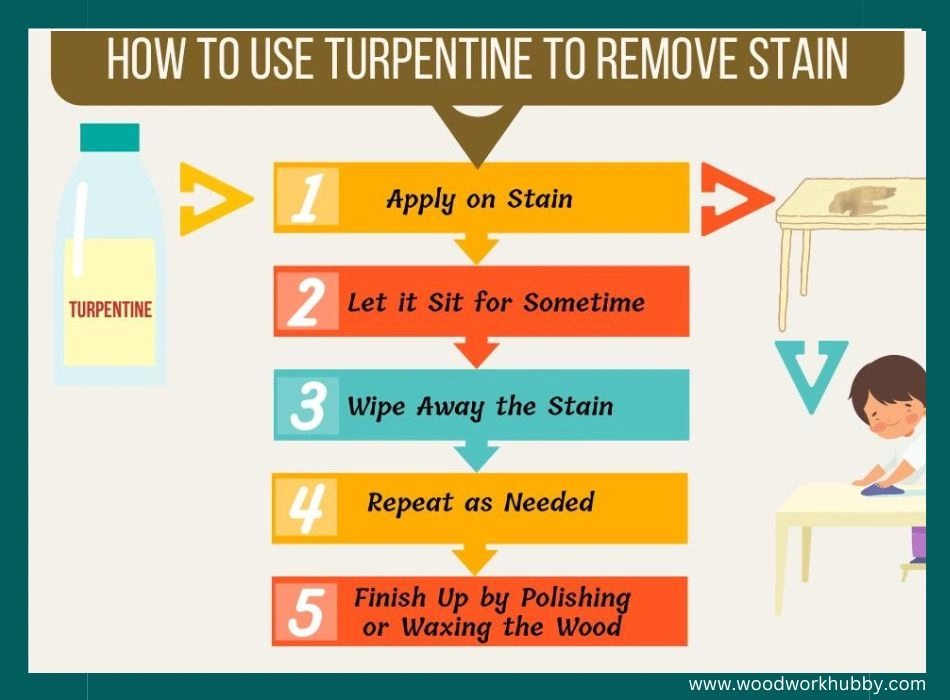
If you decide to use turpentine to remove stains, it’s important to take the following precautions:
- Wear gloves to protect your hands from harsh chemicals.
- Work in a well-ventilated area, as the fumes can be harmful.
- Test the turpentine on a small area of the stain first to ensure it doesn’t damage the wood.
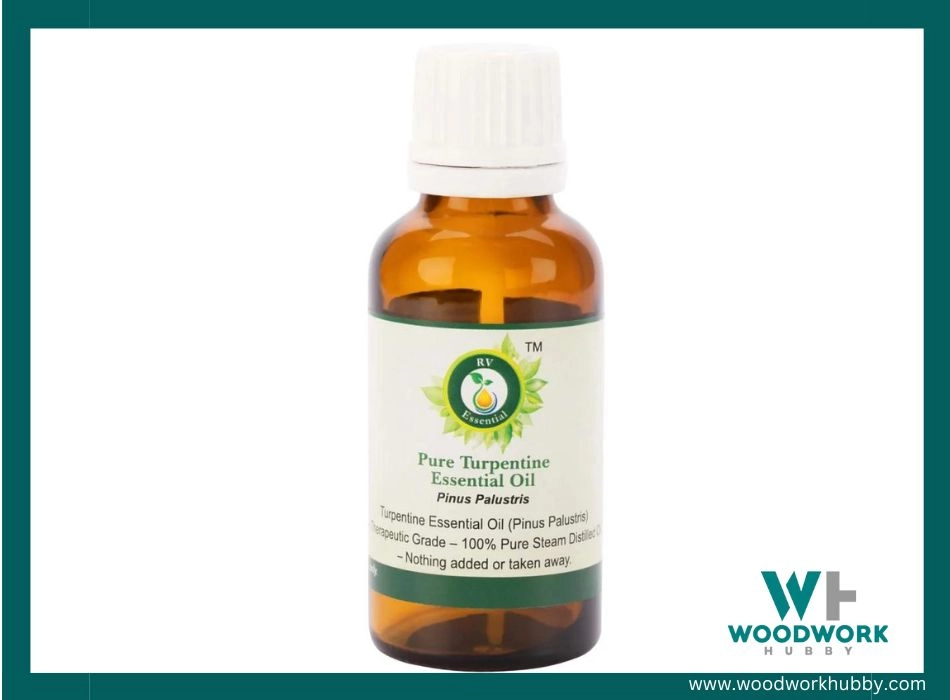
Follow this step-by-step guide on how to effectively remove wood stains using turpentine:
Apply on Stain
You can soak a clean cloth in turpentine and then apply it to the stain.
Let it Sit for Sometime
Allow the turpentine to sit on the stain for a few minutes so that it can soften the stain.
Wipe Away the Stain
Use a soft cloth to wipe away the stain. You may need to scrub gently to remove all of the stain.
Repeat as Needed
If the stain is still visible, you can repeat this process until it is removed.
Finish Up by Polishing or Waxing the Wood
Once the stain is removed, you’ll need to protect the wood by polishing or waxing it. This will help to restore the finish and protect the wood from future damage.
What Risks Are Involved in Using Turpentine to Remove Wood Stain
The main risks involved in using turpentine to remove wood stains are the health risks associated with exposure to this harsh solvent. Turpentine has been linked to cancer, liver damage, and kidney damage. It is also a volatile organic compound (VOC) and can be harmful if inhaled.
Other risks include;
Turpentine is Highly Flammable
When using turpentine, it’s important to take precautions as it is highly flammable. Be sure to work in a well-ventilated area and keep away from any open flames.
Turpentine Can Damage the Finish of Your Wood
If you use turpentine to remove stains, you’ll also need to refinish your wood. This is because turpentine can damage the finish, leaving your wood unprotected.
Turpentine Can Be Harmful if Inhaled
Turpentine fumes can be harmful if inhaled. Working in a well-ventilated area and wearing gloves to protect your hands from harsh chemicals is important.
What Are Some Safer Alternatives to Turpentine?
One popular alternative is mineral spirits. Mineral spirits are also derived from petroleum but are less volatile and have a lower VOC content than turpentine. This makes them safer to use and less likely to cause health problems.
The video talks about the uses of mineral spirits in cleaning the brushes
Other alternatives include:
Paint Thinner
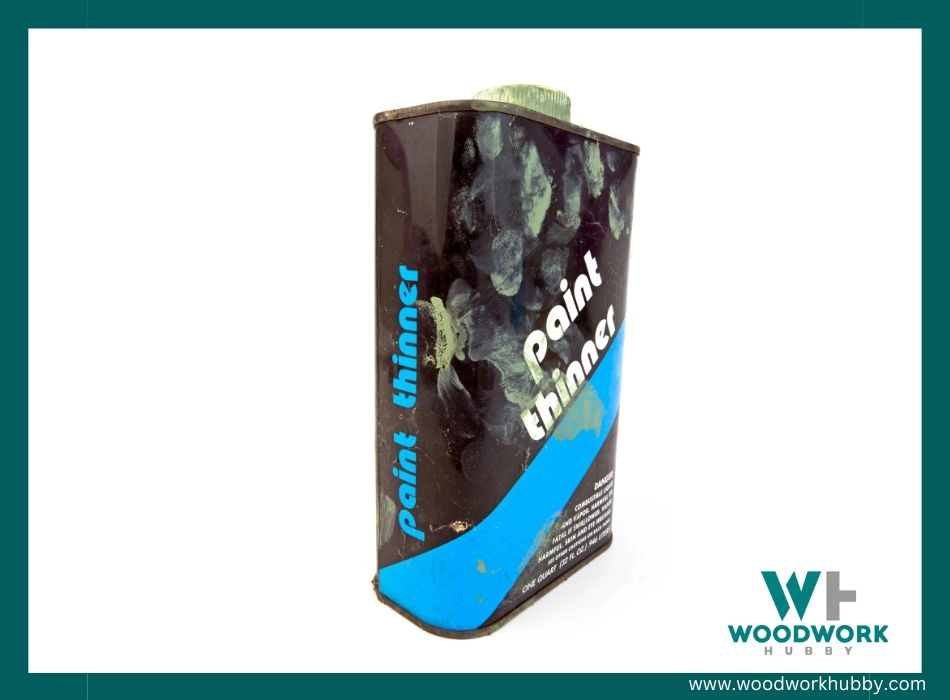
This is another petroleum-based product but is less volatile than turpentine. Paint thinner reduces the thickness of paint and is often used to clean up after painting.
Rubbing Alcohol
Dish soap and Water
White Vinegar
Amazon Brand – Happy Belly White Distilled Vinegar, Kosher, 16 Fl Oz
Simply soak a clean cloth in white vinegar and apply it to the stain. Allow it to sit for a few minutes before wiping away the stain.
Baking Soda
Baking soda is a gentle abrasive that can be used to remove stains. Simply make a paste with baking soda and water and apply it to the stain. Use a soft cloth to scrub the stain before wiping it away.
Lemon Juice
Lemon juice is a natural bleaching agent that can be used to remove stains. Simply soak a clean cloth in lemon juice and apply it to the stain. Allow it to sit for a few minutes before wiping away the stain. You may need to repeat this process if the stain is stubborn.
What Removes Stain from Wood?

There are a number of products that can be used to remove the wood stain. Turpentine is one option, but it has a number of risks associated with it. Safer alternatives include mineral spirits, paint thinner, rubbing alcohol, dish soap and water, white vinegar, baking soda, and lemon juice.
Which product you use will depend on the type of stain you’re trying to remove. Water-based stains can be removed with rubbing alcohol, dish soap, water, white vinegar, or baking soda. Oil-based stains can be removed with mineral spirits, paint thinner, or turpentine.
Does Turpentine Remove Wood Varnish?
Turpentine can remove wood varnish. It effectively dissolves the varnish, allowing you to remove it from your wood. However, turpentine is a harsh solvent and can damage your wood if not used properly. Taking precautions when using turpentine is as important as refinishing your wood after removing the varnish.
Can You Use Turpentine to Clean Wood Floors?
Turpentine can be used to clean wood floors, but it’s important to take precautions. Turpentine is a volatile organic compound (VOC) and can be harmful if inhaled. It’s also a flammable liquid, so it’s important to work in a well-ventilated area and avoid open flames. If you use turpentine to clean your wood floors, you’ll also need to refinish them afterward.
Final Thoughts- Will Turpentine Remove Wood Stain?
Turpentine will remove the wood stain, but it’s a harsh solvent that can be harmful if not used properly. Safer alternatives include mineral spirits, paint thinner, rubbing alcohol, dish soap and water, white vinegar, baking soda, and lemon juice. Choose the right product for your needs and take precautions when using any solvent to remove the wood stain. I hope this article has helped you learn how to remove wood stains safely.

